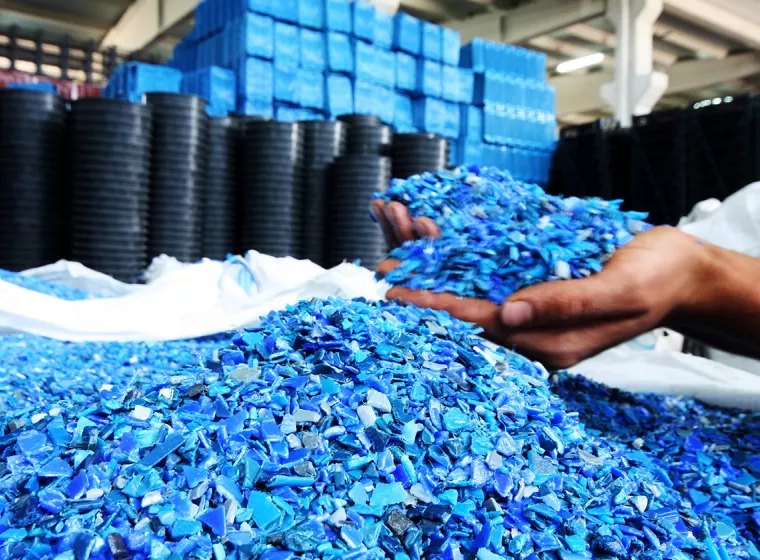November 8, 2023
Manufacturers or importers of PFAS or PFAS-containing articles in any year since 2011 must report uses, volumes, disposal, exposures, and hazards.
On Oct. 11, the Environmental Protection Agency announced finalized reporting and recordkeeping requirements for per- and polyfluoroalkyl substances (PFAS). In accordance with obligations under the Toxic Substances Control Act (TSCA), EPA is requiring any person who manufactures or imports or has manufactured or imported PFAS or PFAS-containing articles any time since Jan. 1, 2011, to electronically report on specific PFAS uses, production volumes, disposal, exposures, and hazards. The final rule goes into effect Nov. 13.
PFAS in the environment
PFAS is a catchall term that includes over 10,000 different fluorine-based chemical compounds. They are an extremely diverse group of chemistries, and correspondingly, they are widely used across many applications and industries for a variety of reasons.
While some PFAS are long-lasting chemical compounds that break down very slowly over time, others are not. According to EPA, there are several critical gaps in our present understanding of PFAS, including how harmful each one may be to people and the environment.
Background and final PFAS reporting requirements
The current EPA ruling was preceded by an Initial Regulatory Flexibility Analysis (IRFA) that was open to public comment in November 2022. The IRFA examined the impact, estimated burden, and costs of the proposed rule on small entities and potential regulatory flexibility alternatives.
According to EPA, the finalized PFAS reporting and recordkeeping rule requires that "Any entities, including small entities, that have manufactured (including imported) PFAS in any year since 2011 will have 18 months following the effective date of this rule to report PFAS data to EPA. Small manufacturers (as defined at 40 CFR 704.3) whose reporting obligations under this rule are exclusively from article imports will have 24 months from the effective date of this rule to report PFAS to EPA."
How the new rule defines "PFAS"
The PFAS subject to the rule include any chemical substance or mixture containing a chemical substance that structurally contains at least one of the following three sub-structures:
- R-(CF2)-CF(R')R'', where both the CF2 and CF moieties are saturated carbons
- R-CF2OCF2-R', where R and R' can either be F, O, or saturated carbons
- CF3C(CF3)R'R'', where R' and R"" can either be F or saturated carbons
This definition is slightly broader than the definition found in the proposed rule. While a list of PFAS meeting this definition was not published in the rule itself, the EPA Computational Toxicity Database is generating a list of PFAS that meet this definition, which could encompass as many as 9,400 substances.
Notably, byproducts and articles are also included in the reporting requirements, and there is not a de minimis level or low volume exemption.
The final reporting requirement, issued in accordance with TSCA section 8(a)(7), will enable EPA to better characterize the sources and quantities of manufactured PFAS in the U.S. The submission period will begin next year, Nov. 12, 2024, through May 8, 2025. Small business entities will report in a broader time frame, from Nov. 12, 2024, through Nov. 10, 2025.
Implications for PFAS manufacturers and importers
This rulemaking places a significant, new burden on companies that manufacture or use PFAS or that import finished products that may contain PFAS. Gathering this level of present and historical information will likely take the entire submission period for many companies, especially given the lack of a de minimis threshold.
Affected companies can begin putting procedures in place now to determine compliance needs, communicate with suppliers, and adapt to other aspects of this rule.
What Can We Help You Solve?
Exponent closely monitors the continually changing PFAS regulatory landscape to help clients prepare for new PFAS regulations. Our experts have years of experience investigating supply chains for PFAS sources, working with third-party laboratories to test materials and products for specific PFAS and total organic fluorine, and assisting clients in making decisions that suit their product lines and stewardship goals.

PFAS Consulting Services
Manage PFAS in your products, supply chains, and waste streams.

Product Stewardship
Overcome business and regulatory challenges at every stage, from research and design to disposal and recycling.

Environmental & Regulatory Compliance
Rigorous analyses to help clients overcome complex environmental and regulatory hurdles and meet auditing obligations.

Sustainability
Meet changing sustainability regulations with rigorous science and experienced consulting services.

Polymers & Chemistry
Multidisciplinary support for materials challenges for diverse clients and applications.

Polymers Expertise for Consumer Products
Rigorous testing and analysis of polymers in consumer products.






